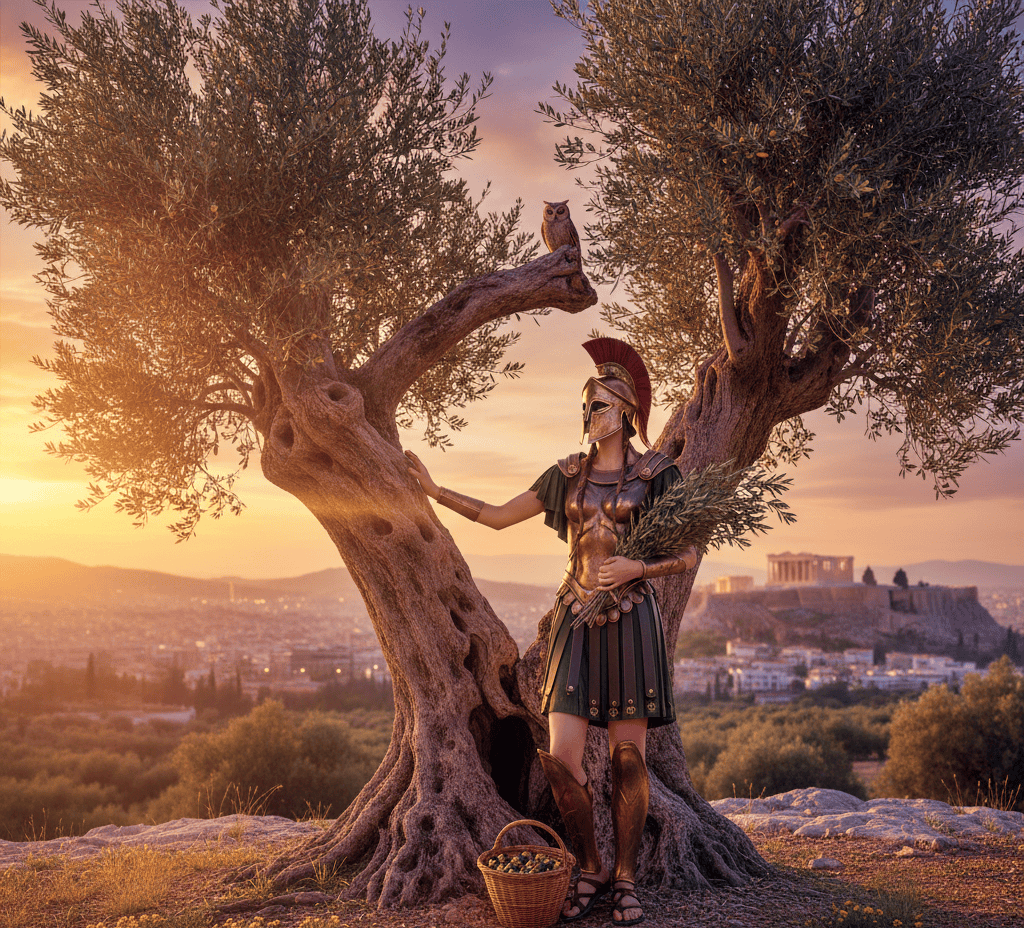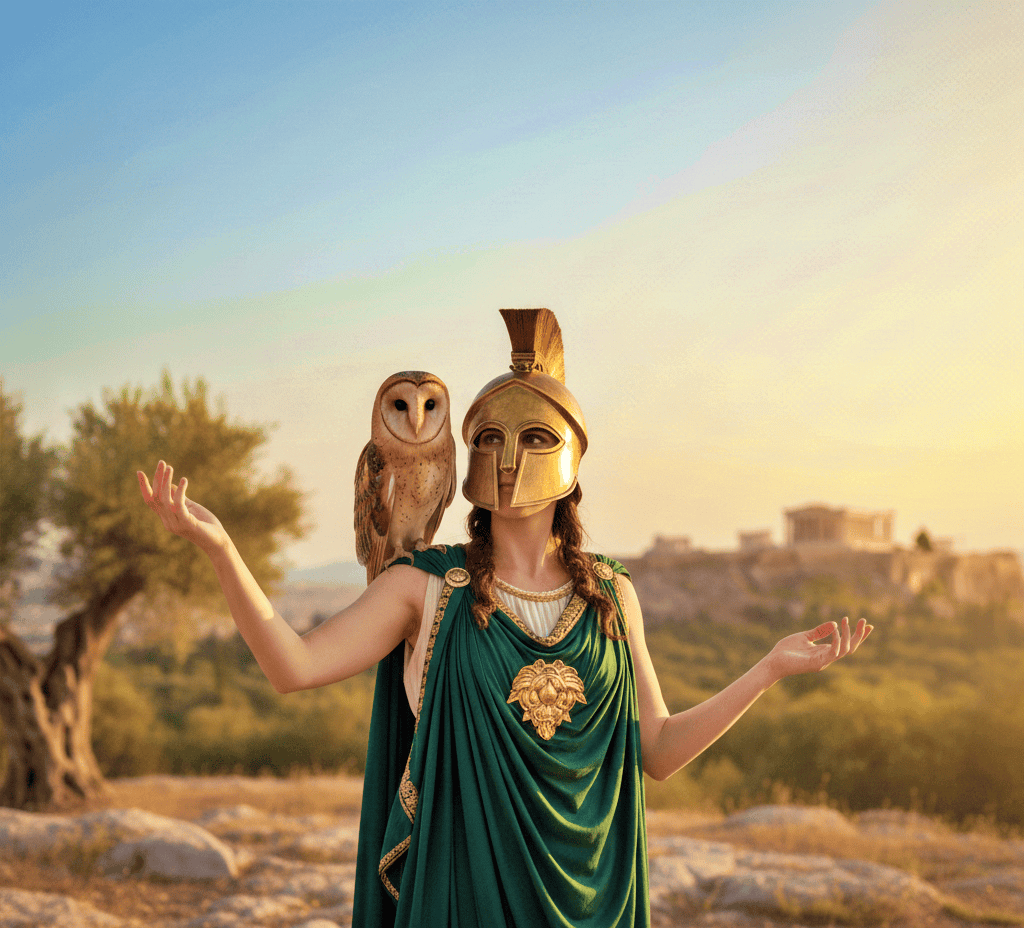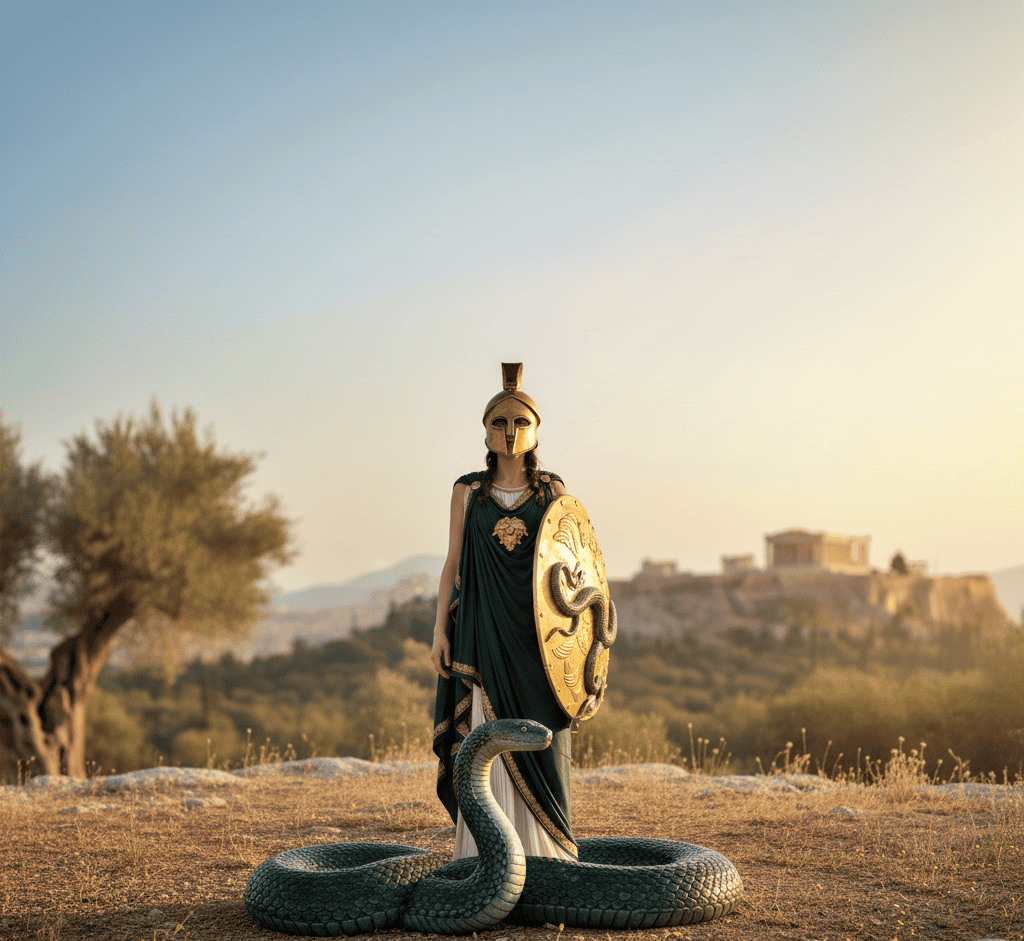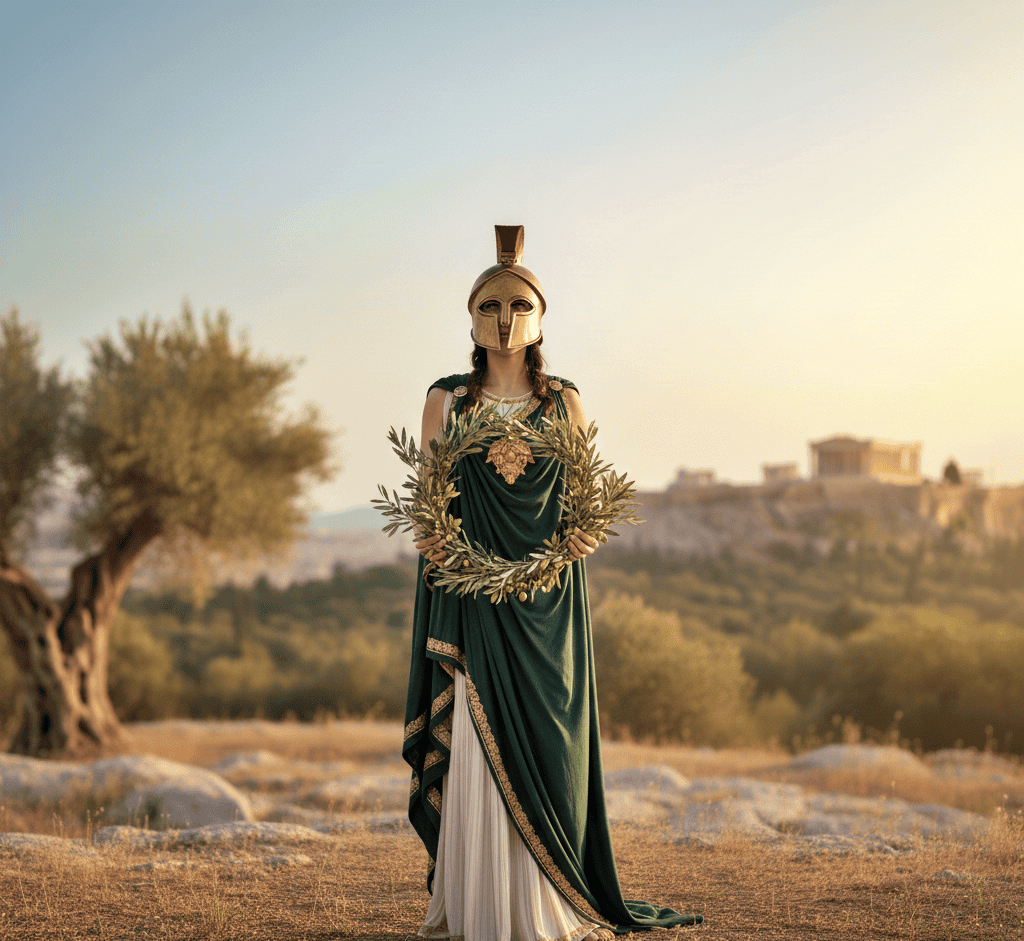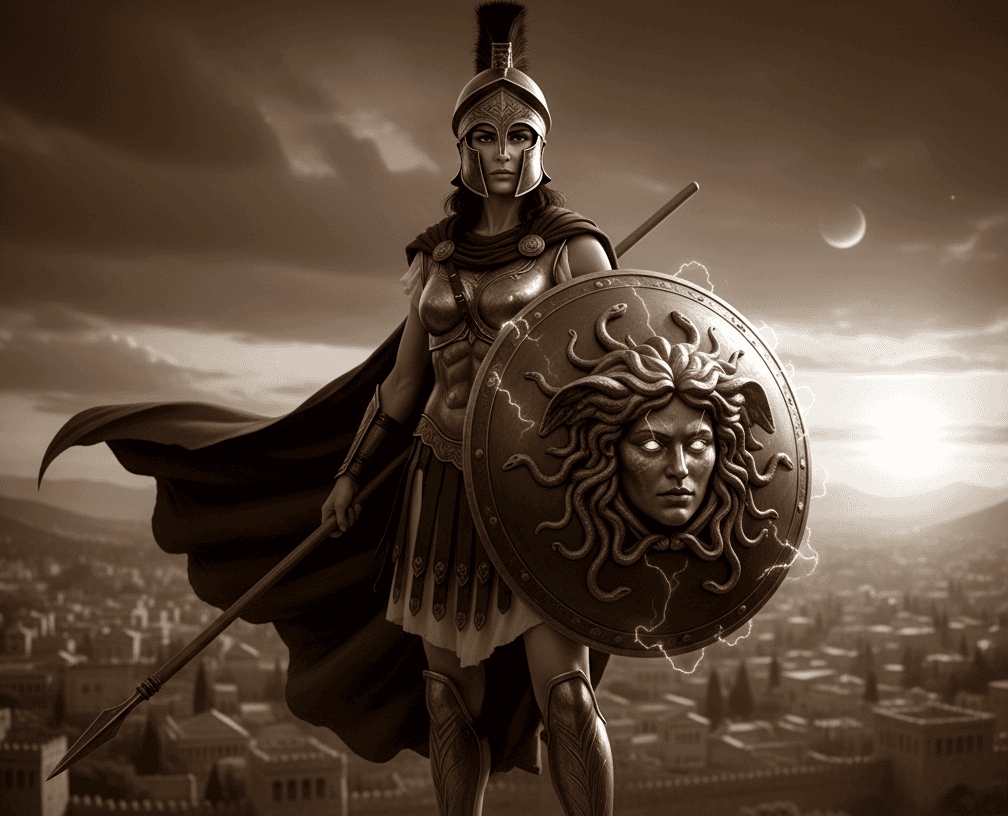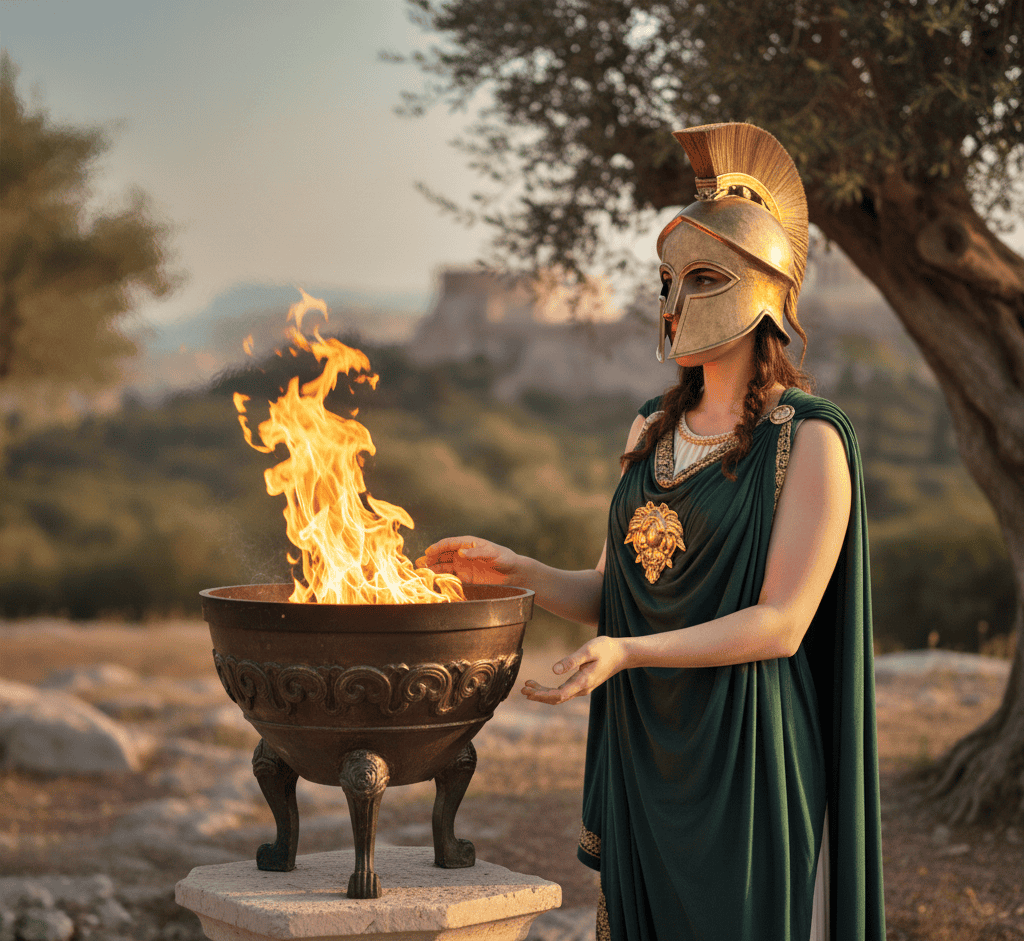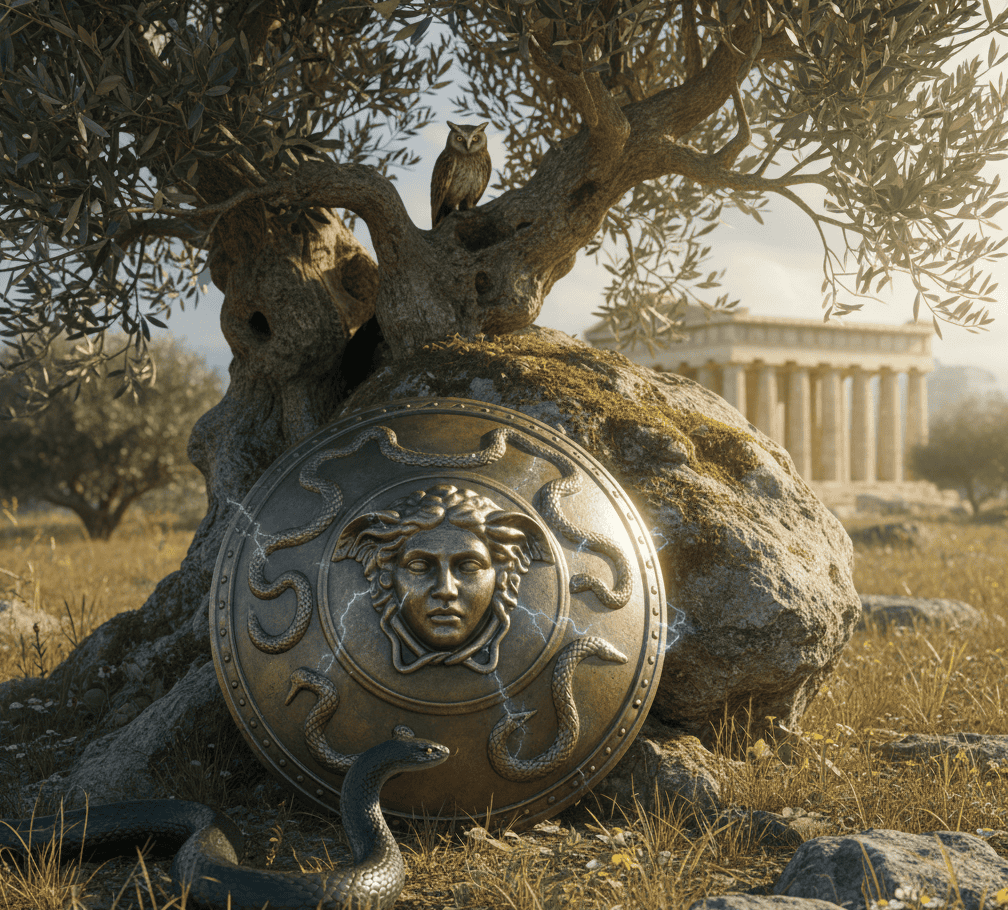Athena, the goddess of wisdom and war, was unlike any other deity on Mount Olympus.
She was strategic, brilliant, and fiercely protective of the cities and people under her care.
What made her stand out was not only her intellect but also the natural symbols tied to her power.
These symbols came from the world around the ancient Greeks, everyday sights that carried divine meaning once Athena touched them.
Here are seven natural symbols that represent Athena and the qualities she embodied.
1. The Olive Tree
The olive tree is perhaps the most iconic of Athena’s symbols. According to myth, she won the patronage of Athens by gifting the people an olive tree.
While Poseidon offered a saltwater spring, Athena’s tree promised nourishment, oil, wood, and prosperity.
The people saw the tree as more practical and crowned her their protector.
The olive tree became more than just a plant. It was a reminder of peace, resilience, and the wisdom of choosing something that sustains life over flashy power.
For the Athenians, every olive branch carried the goddess’s blessing, every grove felt like a piece of her eternal presence.
2. The Owl
The owl is another unmistakable symbol of Athena. It represented sharp sight in the darkness, the ability to see truths hidden from others.
Coins from ancient Athens often bore the owl alongside her name, linking wisdom with wealth and civic pride.
Owls were not just about intelligence. They were also a sign of protection.
People believed an owl flying over soldiers before battle meant Athena was watching.
The bird’s quiet gaze and steady presence matched the goddess’s own calm and strategic mind.
3. The Snake
Snakes might seem frightening, but to Athena, they carried deep symbolic meaning. In Greek stories, snakes often appeared as guardians, protecting sacred places and treasures.
Athena herself was sometimes shown with a serpent at her feet or on her shield, the Aegis.
The snake represented rebirth and renewal, shedding its skin to begin again. For Athena, it was also a reminder of vigilance.
Just as a snake waits silently before striking, Athena’s wisdom encouraged patience and precision in both war and daily life.
The serpent was a natural embodiment of strategy, never wasting energy, always striking at the right moment.
4. The Olive Wreath
Beyond the olive tree itself, the wreath made from its branches was another sacred symbol tied to Athena.
Victors in athletic games, particularly in Athens, were crowned with olive wreaths. To wear one was to be blessed by the goddess of wisdom and strength.
The wreath carried a quiet nobility. It was not made of gold or jewels but from something simple and enduring.
This reflected Athena’s values: true greatness comes not from excess but from skill, perseverance, and honor.
Even today, the olive wreath remains a symbol of peace and achievement, echoing the goddess’s ancient gift.
5. The Gorgoneion
The Gorgoneion, the head of the Gorgon Medusa, became one of Athena’s most famous protective emblems.
Though it was not a living creature anymore, it was deeply tied to the natural world and its power to terrify.
The wild snakes sprouting from Medusa’s head linked it back to nature’s danger, and Athena carried this symbol on her shield and armor.
The Gorgoneion was not just about fear. It was a warning to enemies and a promise to her allies.
It told the world that Athena’s wisdom could harness even chaos and use it as protection.
Just as she turned Medusa’s curse into a weapon, Athena’s strength came from transforming danger into safety.
6. The Olive Oil Flame
Sacred fires lit with olive oil burned in temples dedicated to Athena. This flame was more than just light.
It was a living symbol of endurance and purity. Olive oil burned steadily, a practical choice that reflected Athena’s thoughtful and resourceful nature.
The flame symbolized the goddess’s guiding wisdom, illuminating both the mind and the path forward.
In festivals, contests were held to see who could keep an olive oil flame alive the longest, honoring Athena’s gift of knowledge and her ability to sustain life through practical means.
7. The Shield With Natural Power
Athena’s shield, known as the Aegis, was not only a weapon of war but also a natural symbol.
Decorated with the Gorgoneion and sometimes snakes, it embodied protection rooted in nature’s strength.
It was said to roar like thunder and terrify enemies, but it also represented safety for those under her care.
What makes the shield a natural symbol is how it drew upon living creatures and natural imagery to create something divine.
The snakes, the gorgon’s head, and the aura of power connected Athena’s wisdom to the forces of the earth.
To stand behind her shield was to stand with the goddess of wisdom herself, shielded by nature’s fiercest protectors.

Sempre senti uma forte ligação com o Divino desde o meu nascimento. Como autora e mentora, a minha missão é ajudar os outros a encontrar o amor, a felicidade e a força interior nos momentos mais sombrios.


